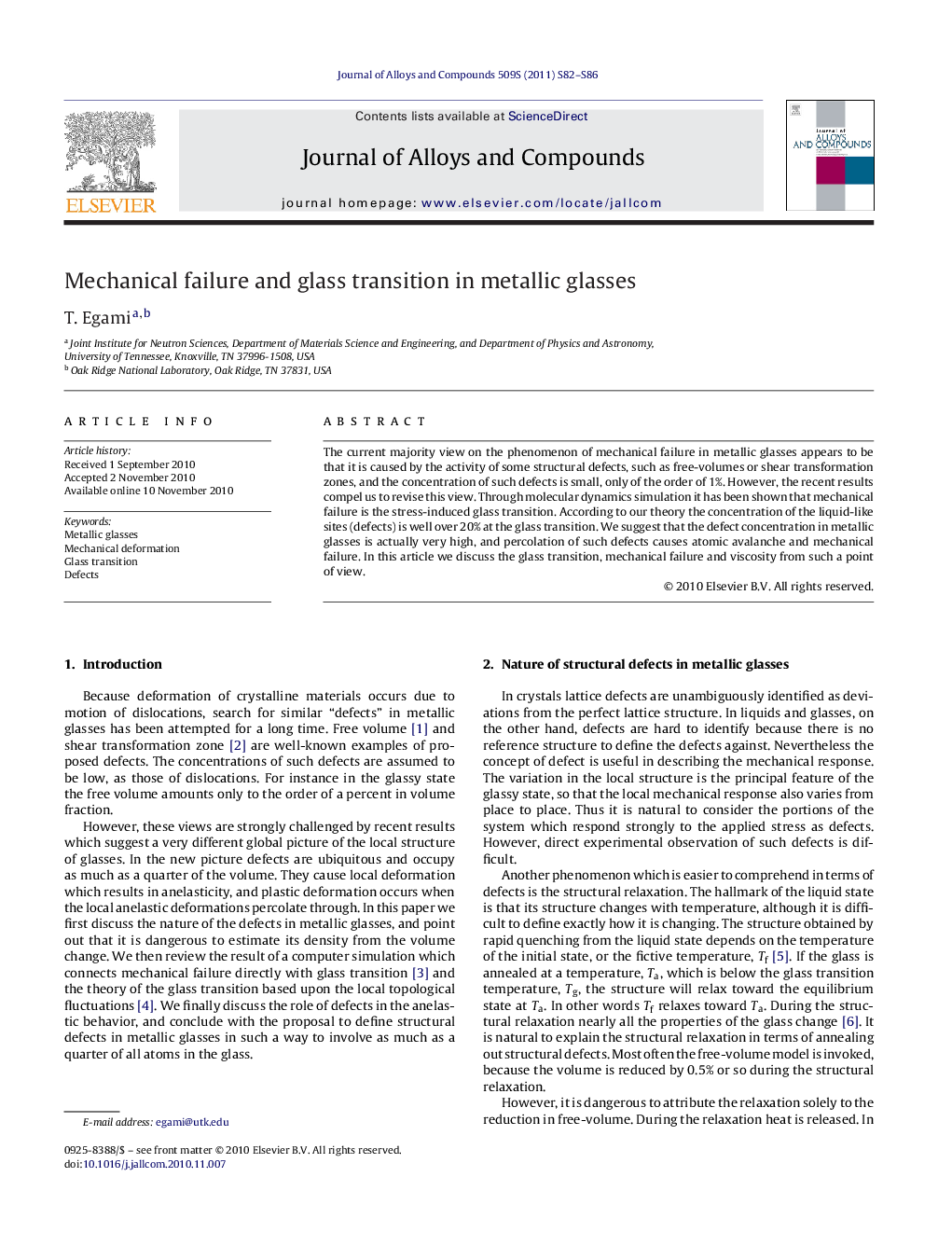| Article ID | Journal | Published Year | Pages | File Type |
|---|---|---|---|---|
| 1619466 | Journal of Alloys and Compounds | 2011 | 5 Pages |
The current majority view on the phenomenon of mechanical failure in metallic glasses appears to be that it is caused by the activity of some structural defects, such as free-volumes or shear transformation zones, and the concentration of such defects is small, only of the order of 1%. However, the recent results compel us to revise this view. Through molecular dynamics simulation it has been shown that mechanical failure is the stress-induced glass transition. According to our theory the concentration of the liquid-like sites (defects) is well over 20% at the glass transition. We suggest that the defect concentration in metallic glasses is actually very high, and percolation of such defects causes atomic avalanche and mechanical failure. In this article we discuss the glass transition, mechanical failure and viscosity from such a point of view.
Research highlights► We review the recent results of molecular dynamics simulations on metallic glasses. ► They show the equivalence of mechanical failure and glass transition. ► We discuss the microscopic mechanism behind this equivalence. ► We show that the density of defects in metallic glasses is as high as a quarter. ► Our concepts about the defect state in glasses need to be changed.
